The PRIX DE ROME of the École des Beaux-Arts
Francisco Martínez Mindeguía
|
|
|
Students entered the École des Beaux-Arts at an age between 15 and 30 years old. They started in the second class and competed in an emulation contest, consisting of an initial sketch or outline, which could last up to 12 hours; this would end up in a large drawing on which they would work for one to three months. Another set of sketch and finished drawing would follow this exercise…Moreover, students assisted theory, history and construction classes. After 2 or 4 years, students could move to the first class, which followed the same process in a more advanced level. Once achieved sufficient merit, according to teachers, students could compete for the Prix de Rome. In 1720, the FrenchAcademy established the architecture prizes of Rome, but competitions were customary only after 1730. By this time the prize, previously in painting (1663) and sculpture (1673), was extended to architecture. This was a practice then spread to other European academies. An example of these competitions is Emmanuel Brune’s project (1836-1886), of a Ladder for the palace of a sovereign, for which he was awarded the Prix de Rome in 1863. This is the plan (notice the way of outlining the section through the ramp), |
 |
|
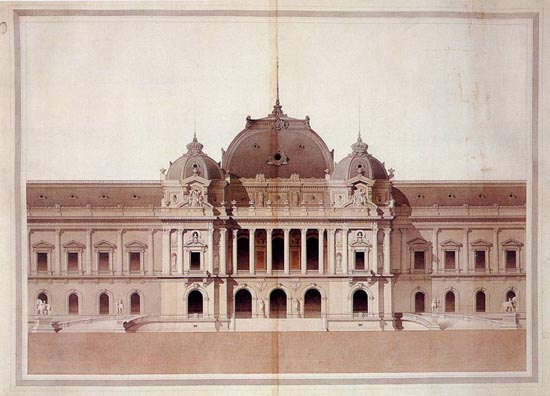 |
With few differences, the Academy came to a normalization of the drawing. Made with pencil or ink outlines and watercolor shadows, only the sectioned elements were darkened in plan, while in section only the interiors were shadowed, leaving the sectioned parts in a clear color.This norm was logical, since in plan the pavement was usually continuous (white), and in section it was necessary to use shadows in order to suggest the non-uniform shape of the interior spaces, and darkening the section would make it difficult to read. |
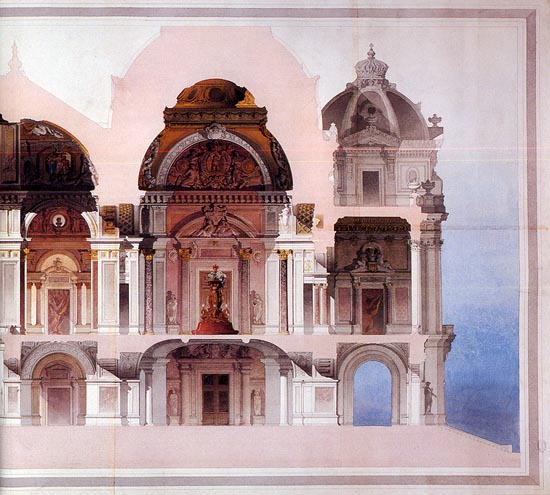 |
|
|
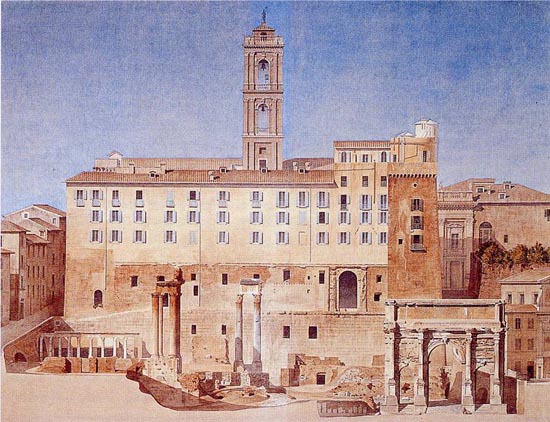 |
|
In the second year, the students would reproduce the restauré état, an imaginary and often idealized restoration, which was accompanied by a written description of the age and construction of the monument. These drawings were exhibited at the FrenchAcademy in Rome and sent to Paris for exhibition and critique. The next drawing, also by Constant Moyaux,
shows the appearance of such drawings.
|
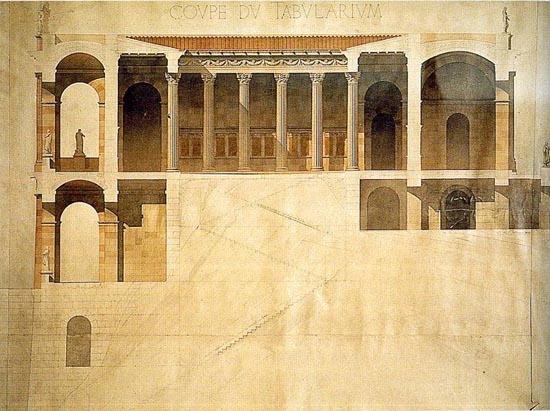 |
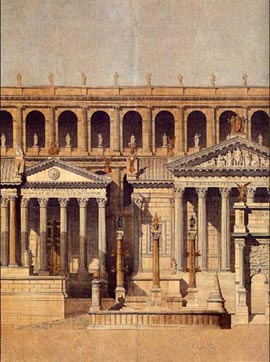 |
The fourth year, after a thorough study, the student would present a full restoration of a classic building. This delivery of Moyaux belongs to his fourth year in Rome, a hypothetical reconstruction of the Tabularium and the Roman Forum. According to the Academy conventions, all parts are shown with equal detail, so that no structure dominate the composition. Each building is differentiated by subtle changes of tone and shadow, projected at 45 degrees. During the fifth year, each student would make his own original project. |
|
|
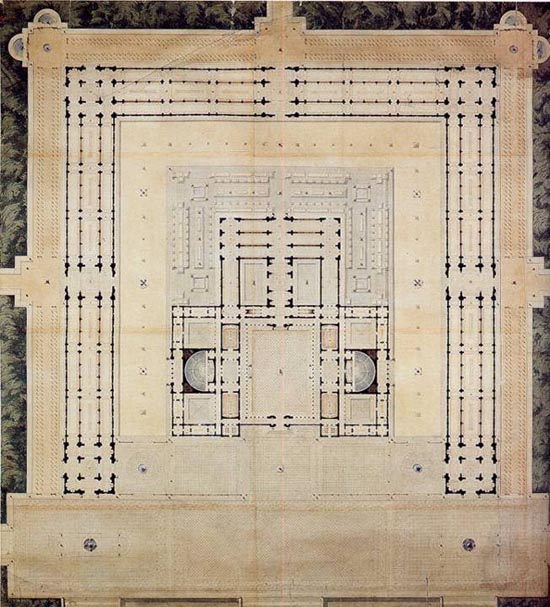 |
|
The left side of the main elevation |
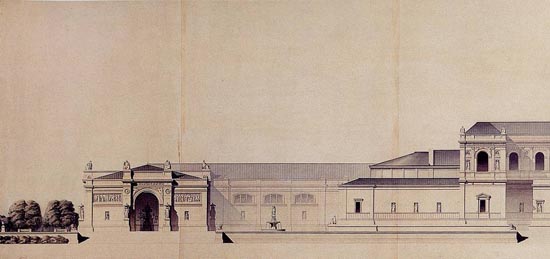 |
The right one, |
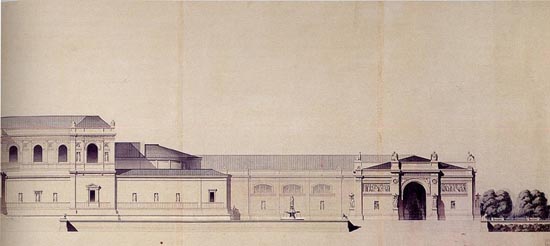 |
Following, the restoration of the JupiterPanthelleienTemple, in Aegina, class 1852-1853,during his fourth year. The current state, |
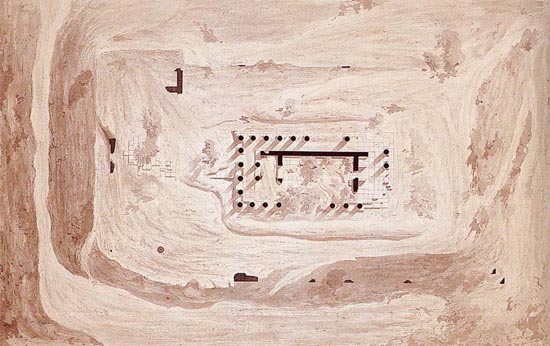 |
 |
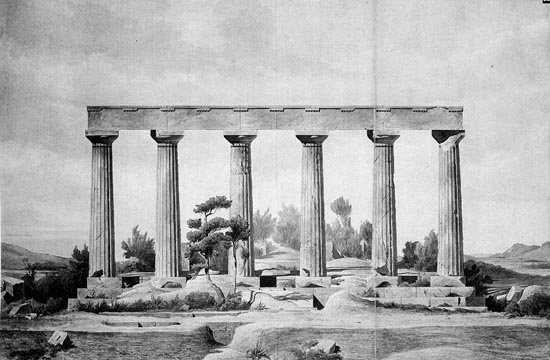 |
and the restoration proposal, |
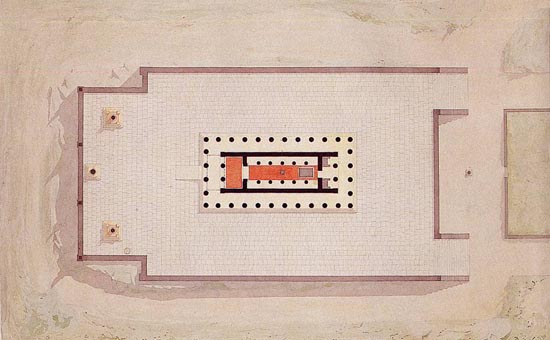 |
 |
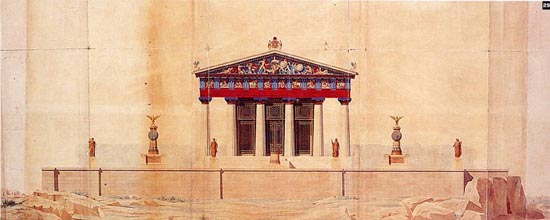 |
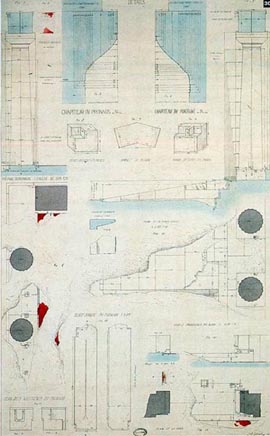 |
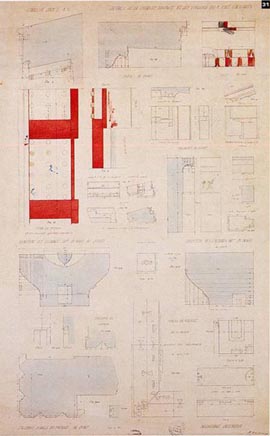 |
Recommended bibliography :
- J. M. Pérouse de Monclos, Concours
de l'Académie royale du XVIIIe siècle, 1984.
- Arthur Drexler, editor of Roma Antiqua:
Forum, Colisée, Palatin. Envois des Architectes Français
(1788-1924), 1985;
catalogue of The
Architecture of the Ecole des Beaux-Arts exhibition
(1977)
- Hector d'Espouy, Fragmentfs d'architecture
antique d'aprés les relevés et restaurations des anciens
pensionnaires de l'Académie de Fance a Rome, 1959
- Hector d'Espouy, Fragments d'architecture
du moyen age et de la renaissance d'après les relevés
et restaurations des anciens pensionnaires de l'Académie de Fance
à Rome, 19-
- Hector d'Espouy, Monuments antiques : relevés
et restaurés par les architectes pensionnaires de l'Académie
de Fance à Rome, 19--
© of text Francisco Martínez Mindeguía
>> Back to the top of the page
>> Back to Dibujos Ejemplares de Arquitectura
